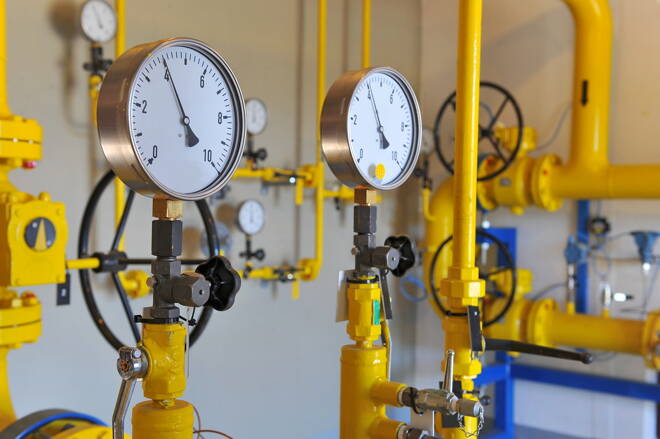Advertisement
Advertisement
Natural Gas Markets Form Bearish Harami
Published: Mar 18, 2022, 15:48 GMT+00:00
Natural gas markets have gapped lower during the trading session on Friday to build what is known as a bearish harami.
Natural gas markets have gapped lower to kick off the Friday session but ended up traveling very little distance during the day. The resulting candlestick formation is what is known as a “bearish harami”, and typically means that we could break down. The $5.00 level has offered resistance multiple times, and at that point, I think it is likely that we could go looking towards the 50 Day EMA underneath. This of course is a common technical indicator that a lot of people will follow, and a lot of people use it as a bit of a “trendline.”
NATGAS Video 21.03.22
If we were to break down below the 50 Day EMA, the next target will be the 200 Day EMA, followed by the $4.00 level. Ultimately, this is a market that will have to decide where it wants to go rather soon, due to the fact that temperatures are rising in the United States and therefore it is going to work against the value of natural gas in general. Even if we were to break above the $5.00 level, then it is likely that there will be a ton of resistance above there, and it is only a matter of time before we would see sellers coming back in.
The common technical analysis signal to short a bearish harami is to sell below the candlestick from Thursday, as it is considered to be the “mother candlestick”, while the Friday candlestick is considered to be the “baby candlestick.” (The Japanese translation of the name of this candlestick formation is “pregnant lady.”) If we get that move, I will not hesitate to sell although I recognize it will probably be very noisy.
For a look at all of today’s economic events, check out our economic calendar.
About the Author
Christopher Lewisauthor
Chris is a proprietary trader with more than 20 years of experience across various markets, including currencies, indices and commodities. As a senior analyst at FXEmpire since the website’s early days, he offers readers advanced market perspectives to navigate today’s financial landscape with confidence.
Advertisement
